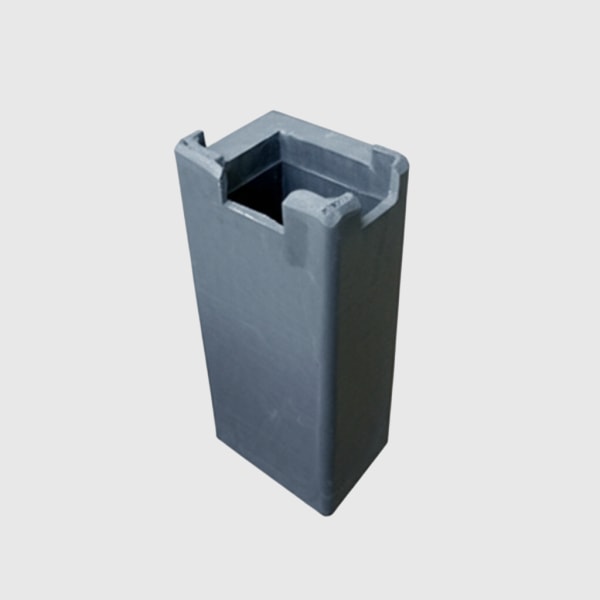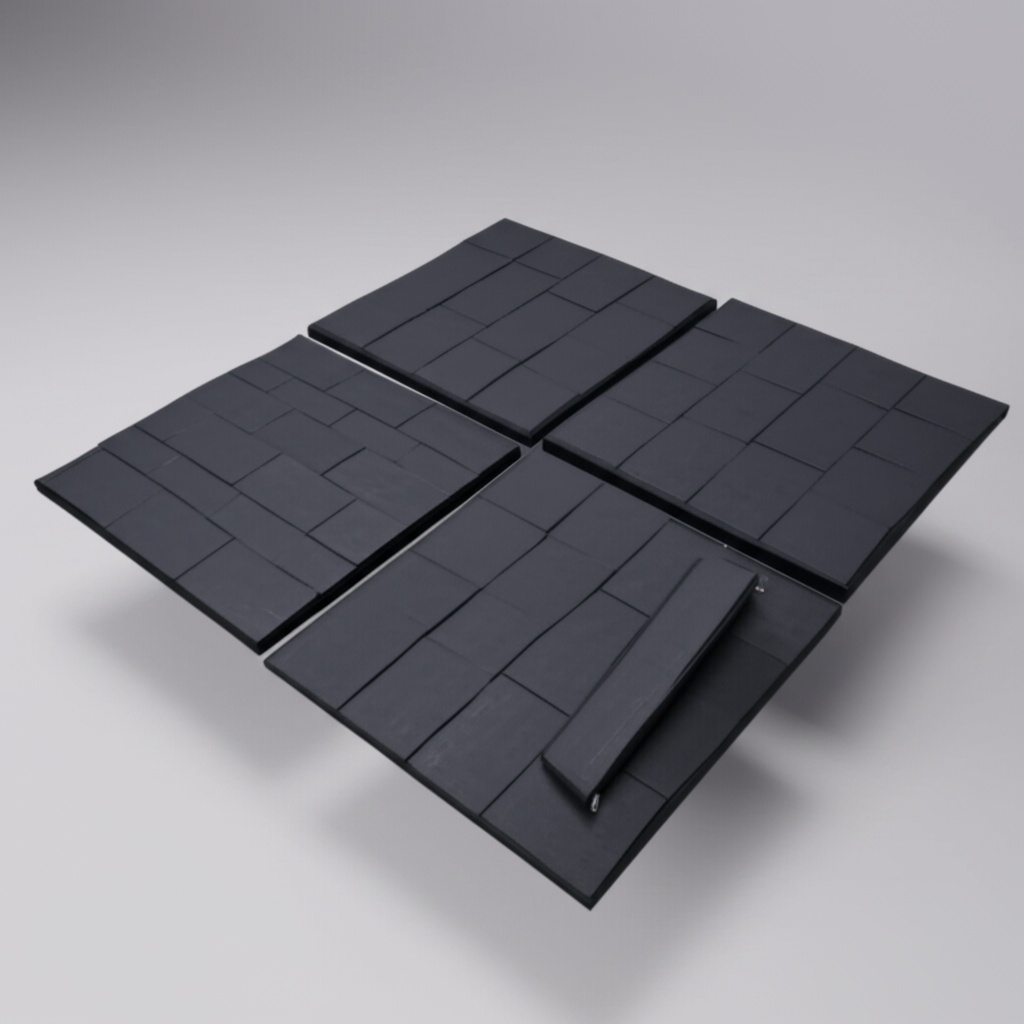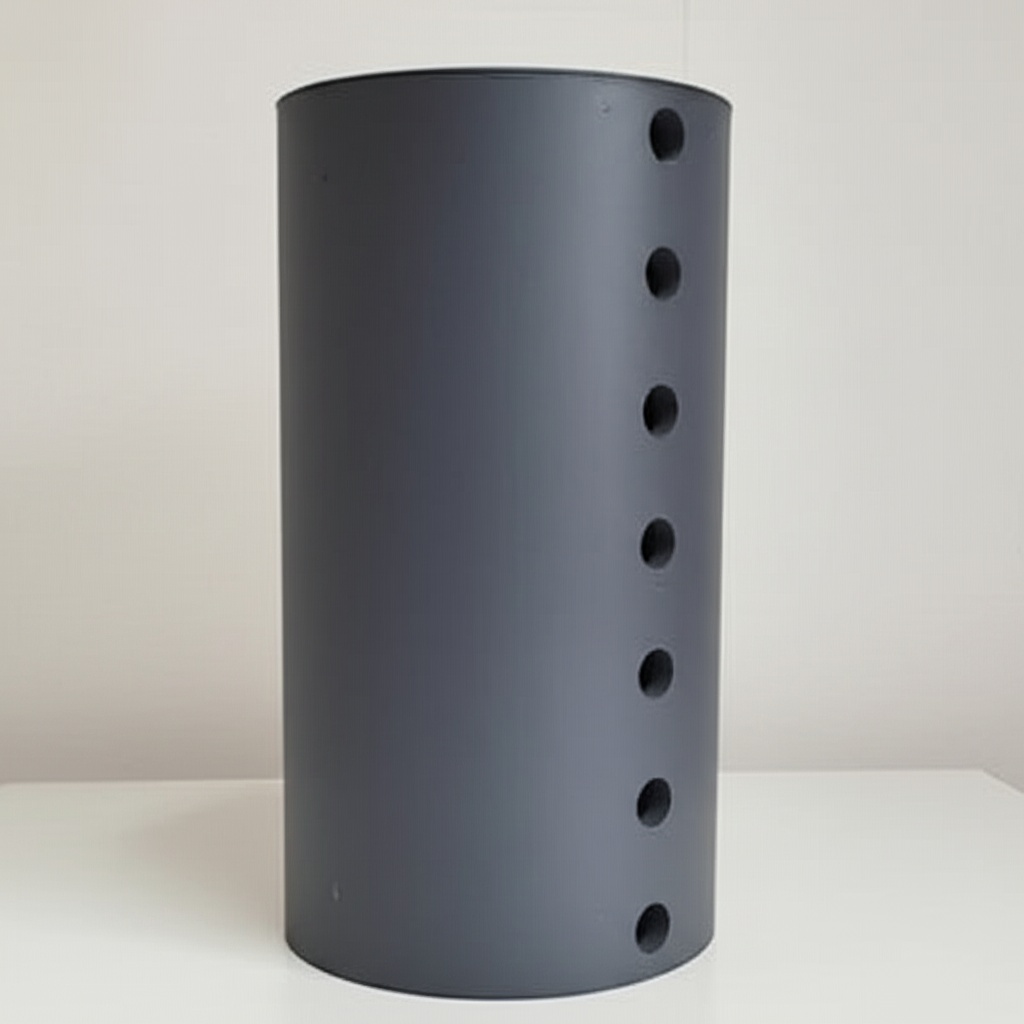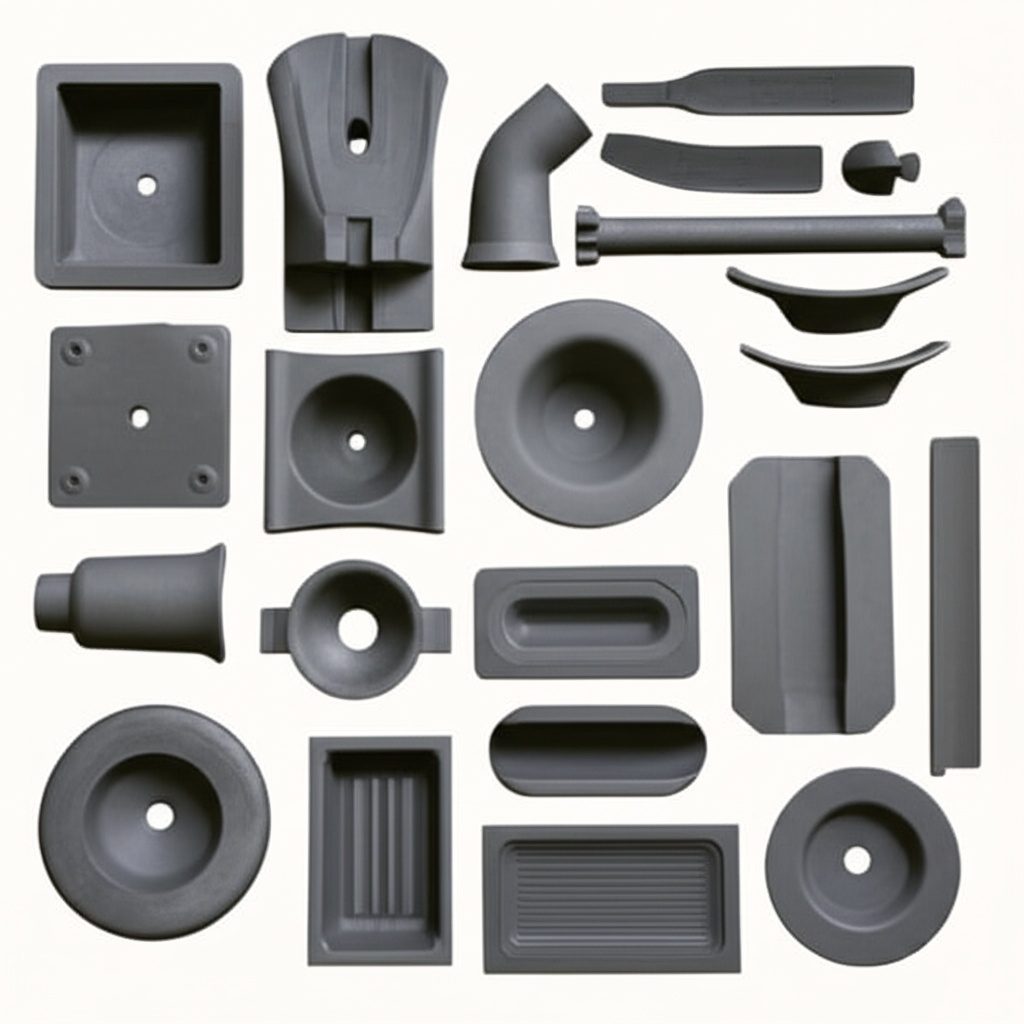Quemado de dispositivos de carburo de silicio y equipo de ensayo automatizado para la cualificación de la fiabilidad a 175-200°C

Compartir
Visión general del producto y relevancia para el mercado en 2025
El carburo de silicio (SiC) y los equipos de ensayo automatizados (ATE) proporcionan los entornos de alta temperatura y alto voltaje necesarios para detectar los primeros fallos y verificar la vida útil en condiciones adversas. En comparación con el silicio tradicional, la mayor intensidad de campo eléctrico y las elevadas temperaturas de unión del SiC exigen hornos especializados, dispositivos de tensión de alimentación, unidades de medición paramétrica y automatización conforme a las normas de seguridad. Las plataformas de burn-in/ATE de Sicarb Tech cualifican los MOSFET de SiC, diodos Schottky, módulos de potencia y etapas de potencia integradas a 175-200°C, simulando el estrés del mundo real en el sector textil y cementero de Pakistán, siderúrgicoy sectores críticos para los datos.
Por qué es importante para Pakistán en 2025:
- Las instalaciones soportan temperaturas ambiente de hasta 45 °C y frecuentes bajadas y bajadas de tensión, por lo que debe comprobarse la robustez de los dispositivos antes de instalarlos.
- Los SAI, VFD, inversores fotovoltaicos y BESS requieren una fiabilidad predecible para reducir el OPEX y evitar interrupciones imprevistas.
- La capacidad de cualificación localizada reduce los plazos de entrega y la dependencia de las importaciones, lo que agiliza la modernización industrial y la economía digital.
- Los objetivos ESG y de eficiencia energética amplifican la necesidad de plataformas SiC duraderas y de alta eficiencia probadas mediante rigurosas pruebas de quemado y fiabilidad automatizada.
Sicarb Tech ofrece sistemas de quemado llave en mano (HTRB, HTGB, ciclos de potencia, tensión de conmutación dinámica) y ATE paramétricos automatizados con registro y análisis de datos. Los sistemas se adaptan a los envases basados en RBSiC/SSiC, garantizando trayectorias térmicas realistas durante el estrés.

Especificaciones técnicas y funciones avanzadas
Capacidades representativas (configurables según las clases de dispositivos y el rendimiento):
- Quemado a alta temperatura (HTRB/HTGB)
- Rango de temperatura: 25-200°C (±1°C de uniformidad dentro de la zona de la cámara)
- HTRB: polarización de drenaje de hasta 1,7 kV; control de fugas de hasta nA; duración de la tensión configurable (8-168 h)
- HTGB: polarización de puerta ±30 V con conformidad de corriente; tendencia de fuga de puerta
- Fuga delta en tiempo real y criterios de fallo con apagado automático por ranura
- Ciclos de potencia y estrés dinámico
- Control ΔTj: 40-100 K por ciclo; hasta 10^6 ciclos; tiempos de permanencia programables
- Impulsos de corriente de hasta 600 A/posición del módulo; VDS de hasta 1,2-1,7 kV
- Tensión de conmutación: 10-100 kHz, dv/dt configurable; perfiles con protección SOA
- ATE paramétrico
- Caracterización basada en SMU: RDS(on) a múltiples temperaturas, Vth, VF/Qrr del diodo del cuerpo, fugas frente a la temperatura
- Trazador de curvas de hasta 3 kV / 600 A (pulsado); fijación Kelvin para mayor precisión
- Pruebas a nivel de módulo: descarga parcial (DP), aislamiento (hipot 3-6 kVrms), resistencia dinámica e impedancia térmica (Zth)
- Compatibilidad de los envases
- Fijaciones para TO-247/TO-263 discretos, módulos de medio puente, módulos de puente completo y bloques de alimentación inteligentes personalizados
- Dispositivos de difusión del calor RBSiC/SSiC para reproducir las trayectorias térmicas de producción
- Datos, seguridad y automatización
- Trazabilidad: código de barras/RFID por dispositivo; lago de datos por ranura con series temporales
- Análisis: Modelos Weibull/Arrhenius, tasa de fallos prematuros (ELFR) y cuadros de mandos de análisis de la deriva
- Seguridad: doble enclavamiento, descarga de alta tensión, parada de emergencia, detección de arcos, carcasas aisladas (IEC 61010)
- Integración: Conectores MES/ERP (OPC UA/REST), control de versiones de recetas de prueba, registros de auditoría
Objetivos de conformidad: IEC 60749 (pruebas de fiabilidad de dispositivos semiconductores), serie JEDEC JESD22 (por ejemplo, A104 ciclos de potencia, A108 HTOL), pruebas medioambientales IEC 60068 y seguridad de planta alineada con las prácticas PEC.
Ventajas de Burn-In/ATE para la fiabilidad industrial y el OPEX
| Garantizar la fiabilidad sobre el terreno en los entornos calurosos, polvorientos y volátiles de Pakistán | Quemado y ATE centrados en SiC (Sicarb Tech) | Configuraciones genéricas de ensayo de semiconductores |
|---|---|---|
| Capacidad y uniformidad de temperatura | 175-200°C con control de zona de ±1°C | ≤150°C; mayor variabilidad |
| Detección de fugas y polarización de alta tensión | Hasta 1,7-3 kV; sensibilidad nA | Menor tensión; precisión limitada |
| Realismo de los ciclos de potencia | ΔTj hasta 100 K con réplicas de la trayectoria térmica | Ciclado básico; escasa replicación térmica |
| Análisis de datos y trazabilidad | Genealogía completa de dispositivos y modelado Weibull | Registros limitados; informes manuales |
| Seguridad y rendimiento | Enclavamientos industriales; automatización multirack | A escala de laboratorio; menor rendimiento |
Ventajas clave y beneficios probados
- Detección precoz de fallos: Los protocolos HTRB/HTGB y HTOL detectan la mortalidad infantil antes del envío, lo que reduce las RMA y el tiempo de inactividad sobre el terreno.
- Aceleración de la vida útil con datos: Los ciclos de alimentación y el estrés de conmutación trazan perfiles de misión para predicciones precisas de la vida útil en condiciones ambientales de 45 °C y con polvo.
- Mayor rapidez de comercialización: Las recetas y dispositivos automatizados reducen los ciclos de ingeniería; las pruebas locales acortan los plazos de cualificación de los proyectos pakistaníes.
- Seguridad de producción: Los enclavamientos de alta tensión y la detección de arcos garantizan la seguridad de los operarios y unos procesos aptos para auditorías.
- Análisis procesables: La desviación paramétrica, las tendencias de fugas y los cambios Zth activan acciones correctivas en los lotes de envasado, montaje o proveedores.
Cita de un experto:
"La vida útil a alta temperatura y los ciclos de potencia siguen siendo los indicadores más fiables del rendimiento en campo de los dispositivos de banda ancha, siempre que la trayectoria térmica refleje de forma realista las condiciones de uso final" - Revista IEEE Power Electronics, Fiabilidad y cualificación de los dispositivos de SiC, 2024
Aplicaciones reales e historias de éxito mensurables
- Programa SAI del centro de datos de Lahore:
- Implementación de 200°C HTOL y ciclos de potencia para módulos inversores de SiC antes de su lanzamiento.
- Resultados: ELFR reducido en un 60%; eficiencia de la sala UPS del 97,3%; dos posibles fallos de campo identificados en burn-in a través de la tendencia creciente de fugas de compuerta.
- Línea VFD textil de Faisalabad:
- Ciclado ΔTj=70 K personalizado con fijación RBSiC; tensión de conmutación a 40 kHz representativa de los accionamientos de telares.
- Resultados: 18% menos de disparos térmicos en campo, intervalos de servicio un 25% más largos; estabilidad de par mejorada gracias a una distribución RDS(on) más ajustada tras el apantallamiento.
- Accionamientos auxiliares de fábricas de cemento, Punjab:
- HTRB a 1,3 kV y apantallamiento de descargas parciales para instalaciones de cables largos.
- Impacto: Disminución de las alarmas EMI; reducción de los incidentes de calentamiento del transformador; vida útil prevista del módulo +22-28% en los modelos de perfil de misión.
【Indicación de imagen: descripción técnica detallada】 Infografía de tres paneles: 1) Horno HTRB/HTGB con gráficos de fugas en tiempo real; 2) Placa fría de ciclos de potencia con termografía IR que muestra ΔTj uniforme; 3) Panel de la consola ATE con gráficos Weibull, ELFR y curvas Zth; anotaciones para niveles de polarización, puntos de ajuste de temperatura y enclavamientos de seguridad; fotorrealista, 4K.
Selección y mantenimiento
- Diseño del perfil de prueba
- Alinee los voltajes HTRB/HTGB con la clase de dispositivo (650/1200/1700 V) y añada margen; seleccione duraciones (24-168 h) según el objetivo de fiabilidad.
- Ciclos de alimentación: elegir ΔTj y recuentos de ciclos por perfil de misión (VFD vs. SAI vs. PV/BESS); verificar la equivalencia de la ruta térmica con el hardware de producción.
- Fijaciones y realismo térmico
- Utilizar luminarias con respaldo RBSiC/SSiC para igualar la dispersión térmica; calibrar con sensores IR e integrados.
- Mantener el espesor y la presión del TIM coherentes con los montajes de campo.
- Bandas de guarda paramétricas
- Establezca criterios de aceptación para la desviación RDS(on), el desplazamiento Vth, el crecimiento de fugas y el inicio PD; aplique reglas de repetición de pruebas en caso de fallo.
- Seguridad y calibrado
- Calibración anual de las SMU, los suministros de AT y los sensores de temperatura; comprobaciones semanales del funcionamiento de los enclavamientos y los circuitos de descarga.
- Formación en ESD y HV PPE según IEC 61010 y normativas locales.
- Gobernanza de datos
- Almacenar trazas sin procesar y KPI derivados; vincular a ID de lote y oblea; implementar el control de cambios para recetas y firmware.
Factores de éxito del sector y testimonios de clientes
- Factores de éxito:
- Colaboración temprana entre ingeniería de diseño, embalaje y fiabilidad para definir las recetas de estrés
- Correlación térmica con los recintos de uso final (flujo de aire, filtros de polvo, presión positiva)
- Ciclo de mejora continua desde el análisis hasta los procesos de proveedores y montaje
- Líneas piloto locales para validar los efectos ambientales estacionales (picos de calor en verano)
- Testimonio (Jefe de mantenimiento, centro de servicio siderúrgico de Karachi):
- "El rodaje identificó las piezas marginales antes de la puesta en servicio. Ahora nuestros accionamientos presentan un comportamiento térmico uniforme y menos disparos de protección"
Futuras innovaciones y tendencias del mercado
- Perspectivas 2025–2027:
- Detección de anomalías asistida por IA en fugas y resistencia dinámica para detectar precursores de fallos
- Dispositivos de módulos refrigerados por las dos caras que permiten una tensión de accionamiento de MT realista
- trazabilidad de obleas de SiC de 200 mm desde el crecimiento del cristal hasta el análisis del rendimiento sobre el terreno
- Cartografía automatizada de descargas parciales para aplicaciones con cables largos en grandes molinos y plantas
Perspectiva de la industria:
"Ampliar la adopción de SiC depende de cerrar el bucle entre las pruebas aceleradas y los análisis de campo: los datos son la nueva moneda de fiabilidad" - IEA Technology Perspectives 2024, capítulo sobre electrónica de potencia
Preguntas frecuentes y respuestas de expertos
- ¿Cuánto tiempo debe durar el rodaje en las implantaciones industriales?
- Las ventanas típicas son de 24-96 horas para producción, 168 horas para infraestructuras críticas; adaptamos en función de los objetivos ELFR y los perfiles de misión.
- ¿Se corre el riesgo de que las pruebas a alta temperatura dañen piezas en buen estado?
- Las pruebas se realizan dentro de SOA con márgenes controlados; los criterios de aceptación y la rampa suave protegen los dispositivos sanos mientras exponen los débiles.
- ¿Puede probar módulos de potencia totalmente montados, no sólo discretos?
- Sí. Admitimos HTOL a nivel de módulo, aislamiento/hipotensión, pruebas de DP, medición de Zth y tensión de conmutación dinámica con refrigeración realista.
- ¿Cómo se integran los resultados con nuestro sistema de gestión de calidad?
- A través de API OPC UA/REST. La genealogía, los parámetros y los registros de aprobación/error de cada unidad se envían a su MES para auditoría y trazabilidad.
- ¿Qué retorno de la inversión pueden esperar las fábricas pakistaníes de la cualificación local?
- Retorno típico de la inversión en 12-24 meses gracias a la reducción de fallos sobre el terreno, menos visitas a las instalaciones, una puesta en servicio más rápida y una mayor estabilidad del rendimiento energético.
Por qué esta solución es adecuada para sus operaciones
Las plataformas de pruebas automatizadas y de quemado de SiC de Sicarb Tech cualifican los dispositivos a las temperaturas y voltajes a los que se verán sometidos en los entornos calurosos, polvorientos y volátiles de Pakistán. Mediante la combinación de dispositivos térmicos realistas, seguridad rigurosa y ATE rica en análisis, reducimos los fallos prematuros, prolongamos la vida útil y estabilizamos la eficiencia en VFD, UPS, PV y BESS, lo que permite reducir el OPEX y aumentar la disponibilidad.
Conecte con especialistas para soluciones personalizadas
Refuerce su canal de fiabilidad con Sicarb Tech:
- Más de 10 años de experiencia en fabricación de SiC con el respaldo de la Academia de Ciencias de China
- Desarrollo personalizado de R-SiC, SSiC, RBSiC y SiSiC, además de dispositivos de rodaje específicos para paquetes complejos
- Servicios de transferencia de tecnología y establecimiento de fábricas para localizar la capacidad de cualificación en Pakistán
- Entrega llave en mano desde el procesamiento de materiales hasta productos probados y cualificados con documentación de conformidad
- Trayectoria probada con más de 19 empresas; configuraciones piloto rápidas y optimización de recetas
Reserve una consulta gratuita para definir su plan de cualificación a 175-200°C, el tamaño de las muestras y el modelo de retorno de la inversión.
- Email: [email protected]
- Teléfono/WhatsApp: +86 133 6536 0038
Reserve ahora la capacidad de rodaje del cuarto trimestre de 2025 para asegurarse colas prioritarias en los ciclos de puesta en servicio punta.
Metadatos del artículo
- Última actualización: 2025-09-11
- Próxima revisión programada: 2025-12-15
- Autor: Equipo de ingeniería de fiabilidad de Sicarb Tech
- Contact: [email protected] | +86 133 6536 0038
- Enfoque en las normas: JEDEC JESD22 (A104, A108), IEC 60749, IEC 60068, IEC 61010; en consonancia con las prácticas PEC y los criterios de calidad del NTDC Grid Code

About the Author: Sicarb Tech
We provide clear and reliable insights into silicon carbide materials, component manufacturing, application technologies, and global market trends. Our content reflects industry expertise, practical experience, and a commitment to helping readers understand the evolving SiC landscape.




